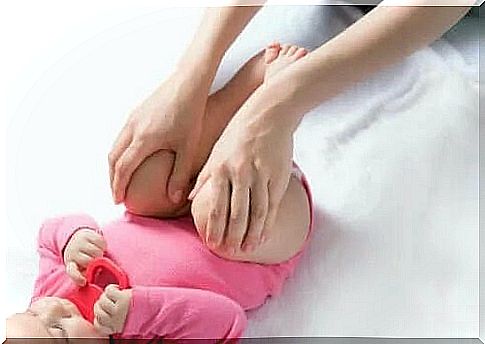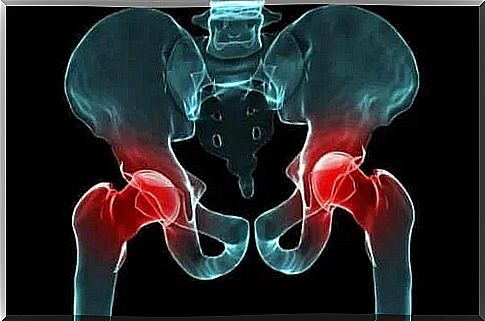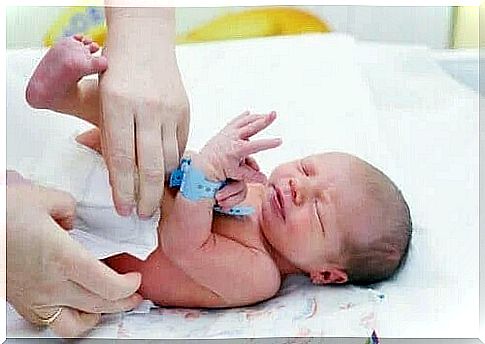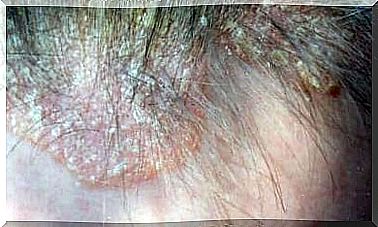Hip Dysplasia: Causes And Treatment

Hip dysplasia is a birth defect, meaning it occurs after birth. This disorder affects the hip joint and affects one in 1,000 children.
Normally, the hip consists of a spherical joint. In a child with hip dysplasia, the socket is usually shallow. This allows the spherical area of the femur to slide in and out of the socket. Then the “ball” may be partially or completely displaced.
At the same time, it should be mentioned that the majority of people suffering from this congenital defect are usually firstborn children and women. The family history of hip dysplasia favors the development of this problem.
Hip dysplasia – causes
That is why hip dysplasia is a situation in which there is a growth disturbance at the level of anatomical structures. This includes the soft parts of the joint.

Today, experts believe that this disorder is a consequence of the eccentric pressures of the femoral head in the last month of pregnancy.
However, hip dysplasia is a disease considered to be “hereditary multifactorial”. By this term, experts understand that several factors – both genetic and environmental – have determined the birth defect.
For example, one of the environmental factors experts say is responsible for hip dysplasia is the baby’s response to the mother’s hormones during pregnancy.
A narrow uterus that prevents fetal movement or gluteal delivery can also cause hip dysplasia. In addition, remember that the left hip may suffer the most. This is due to the position of the fetus in the uterus.
Treatment of hip dysplasia
The aim of the various treatments for hip dysplasia is to achieve lowered hip pressure quickly and early in a stable and safe manner.

After the reduction is achieved and the concentric pressure of the femoral head within the acetabulum is restored, the acetabular vault ossifies and re-develops. This is especially true during the first two years of life, when hip dysplasia is largely reversible.
The treatment indicated will depend on several factors. These include whether the sprain is typical or teratogenic, as well as the age of the child or the duration of the sprain.
Treatment from birth to six months
The second stage after reduction is to maintain the physiological position. For this, professionals usually use a variety of devices. Pavlik’s harness is the most popular.
This harness is a dynamic device that allows active hip movement in the safety zone. In this way, it allows the acetabulum and the femoral head to develop normally when the hip moves in the reduced position.
The duration of treatment varies depending on the child. After treatment, doctors must take X-rays to check that the joint is developing properly.
Treatment from six to eighteen months
This procedure is necessary when previous treatment has failed and in cases where diagnosis is made later. The usual treatment for this period is surgery. The primary factor in the treatment of hip dysplasia is the achievement of a concentric femoral head reduction.

Once this is successful, the second step is to maintain the reduction and improve hip stability. This may require an osteotomy (surgical cutting or cutting of bone). Among them, there are several different types:
- Salter,
- Pemberton,
- Osteotomy dega,
- Spherical osteotomy,
- Triple nameless osteotomy,
- Acetabuloplasty.
Application
Hip dysplasia is a disorder that occurs more frequently in female infants than in men. It appears shortly after birth, so it is said to be a birth defect and affects 1 in 1,000 babies.
Today, this disorder is reversible, usually in a fairly simple way. However, in the event of late diagnosis, specialists usually choose to have the patient undergo surgical intervention.
If you have any doubts about this disorder, don’t hesitate to tell the specialist so that they can tell you which treatment is most appropriate for your situation.









